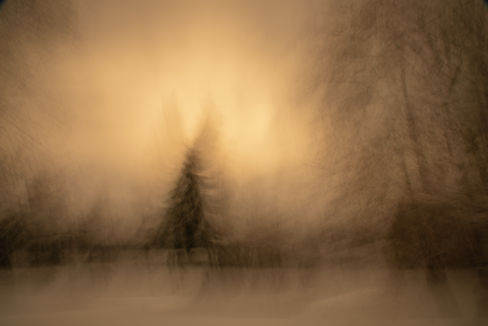ICM Videos - Option 1
section 1 - fundamentals
Intentional Camera Movement - Basics
Intentional Camera Movement - Basics
Intentional Camera Movement - Basics
Intentional Camera Movement - Basics
Intentional Camera Movement - Basics
print info
Windows
Windows
Intentional Camera Movement - Basics
intentional
a determination to act in a certain way - what one intends to do or bring about

Most photographs since the invention of the camera have been taken with the camera being stabilized with the intent to capture the sharpest image possible. But what if you want to create some blur, or be a non-conformist, like the impressionist painters Monet, Renoir, Cezanne or Van Gogh. What if you want to capture the essence of the energy you see in front of you? What if you want to experiment and break the rules and look for some unusual results?
Intentional camera movement is just that. The camera is moved in a specific way, while the shot is being taken, in an attempt to record a desired image.
This technique has likely been around since the invention of the camera and many great film photographers were getting incredible results, and with the advent of digital cameras, people are able to practise and improve this technique far more easily and quickly.
camera
a lightproof box fitted with a lens through the aperture of which the image of an object is recorded on light-sensitive material

Phones and point and shoot cameras can be used but usually have limited abilities to control apertures, shutters speeds and ISO, but there are numerous apps for phones and software to create an ICM effect after the shot has been taken. One problem with this technique is that you won't be able to fully immerse yourself into the shot-by-shot progression during a photo shoot, which is where the magic really begins.
By using a digital single lens reflex (dslr) or mirrorless camera for ICM, you can find yourself in a blissful state of creativity.
movement
to proceed in a certain direction

A variance of direction, distance and speed will create innumerable results.
Something has caught your eye and you want to capture the essence of that subject. What kind of image do you want to create? What is your intention? Do you want a dreamy, washed image or just a slightly blurry image?
While the shutter is open to take the shot, what direction(s) will you move the camera? Will you move it slowly or quickly? Will you move it only slightly or will you move it from one side of the frame, all the way over to the other side?
Maybe you liked those movements, but you want to adjust how long your shutter stays open and try them all over again. Once you have chosen your subject on the merits of contrast, colour, lines, shape, form, texture, patterns or anything else, the success of your ICM photo will depend on the relationship between that subject and the camera's movements using the three key elements of direction, distance and speed.
The more a photographer is able to control these aspects of movement, the more likely she or he will be able to create the desired image they are after.
caution

Awesome fun.
Fantastic opportunity to let your creativity go rampant.
You may get lost in time.
You may fill up your memory card(s) every time you go to shoot.
You may need a lot of storage for all your photos you take.
You might get hooked.
You might add another area of expertise to your photography.